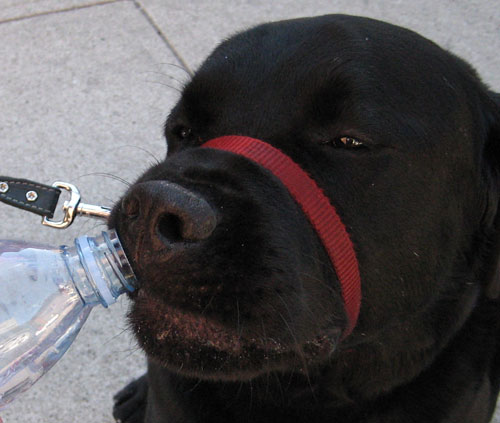
|
Lorna Mills and Sally McKay
Digital Media Tree this blog's archive OVVLvverk Lorna Mills: Artworks / Persona Volare / contact Sally McKay: GIFS / cv and contact |
View current page
...more recent posts

I am going to have to pay more attention to detail if I am going to get through school. Of course, it is only the day before class that I realise one of the essays I've been reading is not required, and at the same time I have completly ignored an essay that is. D-oh! oh well, the one I wasn't supposed to read was pretty good. It's about explanation and description of artworks, and the various implications of different kinds of words and situations. Here's a bit that I thought I'd share, since it applies directly to L.M.'s dog, who is a force of nature, if not a work of art.
In everyday life if I offer a remark like "The dog is big", the intention and effect will depend a great deal on whether or not that dog is present or known to my hearers. If it is not, the 'big' — which, in the context of dogs, has a limited range of meaning — is likely to be primarily a matter of information about the dog; it is big, they learn, rather than small or middle-sized. But if it is present — if it is standing before us [perhahps rubbing it's gi-normous slobbery grinning head in your lap] as I talk—then 'big' is more a matter of my proposing a kind of interest to be found in the dog: it is interestingly big, I am suggesting. I have used 'dog' to point verbally to an object and 'big' to characterize the interest I find in it.
From Michael Baxandall's "Patterns of Intention" in The Art of Art History: A Critical Anthology, Donald Preziosi, ed. (Oxford, New York: Oxford University Press), 1998. pp. 59-60